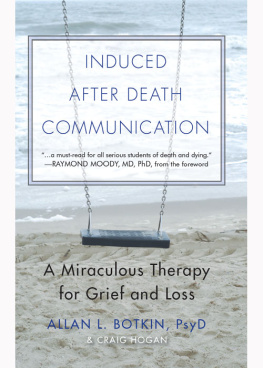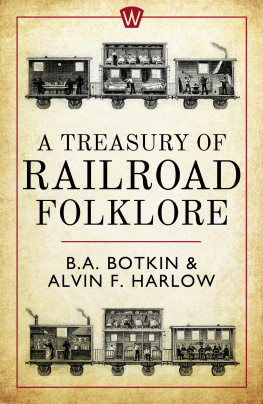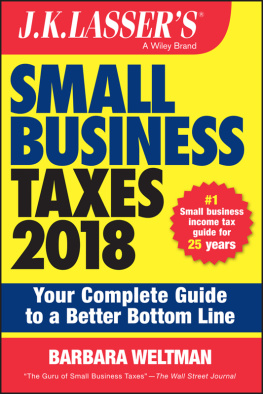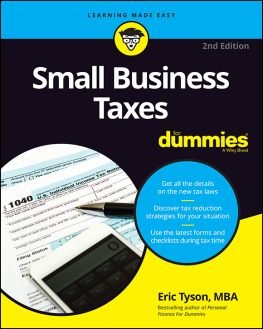Copyright 2015 by Sandy Botkin. All rights reserved. Except as permitted under the United States Copyright Act of 1976, no part of this publication may be reproduced or distributed in any form or by any means, or stored in a database or retrieval system, without the prior written permission of the publisher.
ISBN: 978-0-07-184964-7
MHID: 0-07-184964-5
The material in this eBook also appears in the print version of this title: ISBN: 978-0-07-184960-9, MHID: 0-07-184960-2.
eBook conversion by codeMantra
Version 1.0
All trademarks are trademarks of their respective owners. Rather than put a trademark symbol after every occurrence of a trademarked name, we use names in an editorial fashion only, and to the benefit of the trademark owner, with no intention of infringement of the trademark. Where such designations appear in this book, they have been printed with initial caps.
McGraw-Hill Education eBooks are available at special quantity discounts to use as premiums and sales promotions or for use in corporate training programs. To contact a representative, please visit the Contact Us page at www.mhprofessional.com.
This publication is designed to provide accurate and authoritative information in regard to the subject matter covered. It is sold with the understanding that neither the author nor the publisher is engaged in rendering legal, accounting, securities trading, or other professional services. If legal advice or other expert assistance is required, the services of a competent professional person should be sought.
From a Declaration of Principles Jointly Adopted by a Committee of the American Bar Association and a Committee of Publishers and Associations
TERMS OF USE
This is a copyrighted work and McGraw-Hill Education and its licensors reserve all rights in and to the work. Use of this work is subject to these terms. Except as permitted under the Copyright Act of 1976 and the right to store and retrieve one copy of the work, you may not decompile, disassemble, reverse engineer, reproduce, modify, create derivative works based upon, transmit, distribute, disseminate, sell, publish or sublicense the work or any part of it without McGraw-Hill Educations prior consent. You may use the work for your own noncommercial and personal use; any other use of the work is strictly prohibited. Your right to use the work may be terminated if you fail to comply with these terms.
THE WORK IS PROVIDED AS IS. MCGRAW-HILL EDUCATION AND ITS LICENSORS MAKE NO GUARANTEES OR WARRANTIES AS TO THE ACCURACY, ADEQUACY OR COMPLETENESS OF OR RESULTS TO BE OBTAINED FROM USING THE WORK, INCLUDING ANY INFORMATION THAT CAN BE ACCESSED THROUGH THE WORK VIA HYPERLINK OR OTHERWISE, AND EXPRESSLY DISCLAIM ANY WARRANTY, EXPRESS OR IMPLIED, INCLUDING BUT NOT LIMITED TO IMPLIED WARRANTIES OF MERCHANTABILITY OR FITNESS FOR A PARTICULAR PURPOSE. McGraw-Hill Education and its licensors do not warrant or guarantee that the functions contained in the work will meet your requirements or that its operation will be uninterrupted or error free. Neither McGraw-Hill Education nor its licensors shall be liable to you or anyone else for any inaccuracy, error or omission, regardless of cause, in the work or for any damages resulting therefrom. McGraw-Hill Education has no responsibility for the content of any information accessed through the work. Under no circumstances shall McGraw-Hill Education and/or its licensors be liable for any indirect, incidental, special, punitive, consequential or similar damages that result from the use of or inability to use the work, even if any of them has been advised of the possibility of such damages. This limitation of liability shall apply to any claim or cause whatsoever whether such claim or cause arises in contract, tort or otherwise.
Contents
This chapter explains why everyone who is employed should have some kind of business, preferably a home-based business. If you dont have one, you are losing thousands each year.
How to deduct your golf, sporting tickets, movies, and playsand audit-proof all these deductions. You will learn some IRS inside secrets related to Dutch-treat meals and learn about the great $75 exception to keeping receipts, as well as the home entertainment exception. You will be having twice as much fun if you know its deductible!
This chapter deals with how to deduct your travel and vacation expenses. It will put thousands in your pocket.
How would you like to completely deduct the equivalent of your kids college education, room and board at college, and their weddings? You can, with income shifting. This chapter also deals with a great tax planning technique called the gift-sale technique and the Botkin Trust, which allows a double deduction for equipmentand has been approved in numerous Supreme Court cases. I love this chapter!
Learn the five methods of IRS-bulletproofing your automobile deductions. This is a must if you use your car for business.
This chapter explains how to convert your home into a tax-deductible money machine, using little-known audit-proofing strategies. One of my students told me that this chapter reduced her taxable income by $100,000.
What do you do when you get a letter from the IRS inviting you in for a chat? This chapter covers what your chances are of being audited, your audit rights, how to reduce your chances of being audited, what to do if you dont have the money to pay the IRS, and much more. This is a great chapter and you should read it carefully.
This chapter illustrates the practical steps necessary to withstand any hobby attack by the IRS. I have been so successful with clients who have used this information that many accountants have asked me for copies of this book because of this chapter alone. If you are running a business out of your home, this chapter could save you a bundle and prevent lots of IRS problems.
Heres a great overview of the pros and cons of incorporating vs. being a sole proprietor or being a limited liability corporation.
Many well-known, wealthy personalities (and many con artists) incorporate in Nevada. You will learn exactly why. This has been a well-kept secretuntil now!
This technique works especially well for Middle America businesses.
This chapter explains what should and what should not be transferred to a corporation. It also covers a crucial topic that has killed many businesses: dealing with co-owners and partners. Finally, if you terminate your corporation at a loss, it explains a method that will give you an ordinary loss rather than a less-valuable capital loss.
This chapter deals with most of the wonderful tax-free fringe benefits that you can have in almost any small business that are not covered in other chapters. I will discuss such perks as payment for parking, transportation, exercise equipment, employee achievement awards, and much more.
This chapter continues the discussion of tax-free fringe benefits from , with parking, transit passes, vanpools, cafeteria plans, qualified profit-sharing plans, SEPs, SIMPLE IRAs, and more.
Here are the big four: (1) the large deduction for mortgage points, (2) the new universal exclusion that will allow you to avoid up to $500,000 of gain on your properties every two years, (3) choosing to make repairs vs. improvements on your property, and (4) one of the biggest tax deduction mistakes in divorce situations. In fact, do not get divorced without reading this chapter!
This chapter highlights qualified tuition plans for your kids future education, which will enable you to pay for college with tax-free savings. This chapter also explains the benefits of both the Lifetime Learning Credit and the Hope Tax Credit, both of which result in a dollar-for-dollar reduction in your taxes. The chapter also covers the rules of deducting student loan interest.






